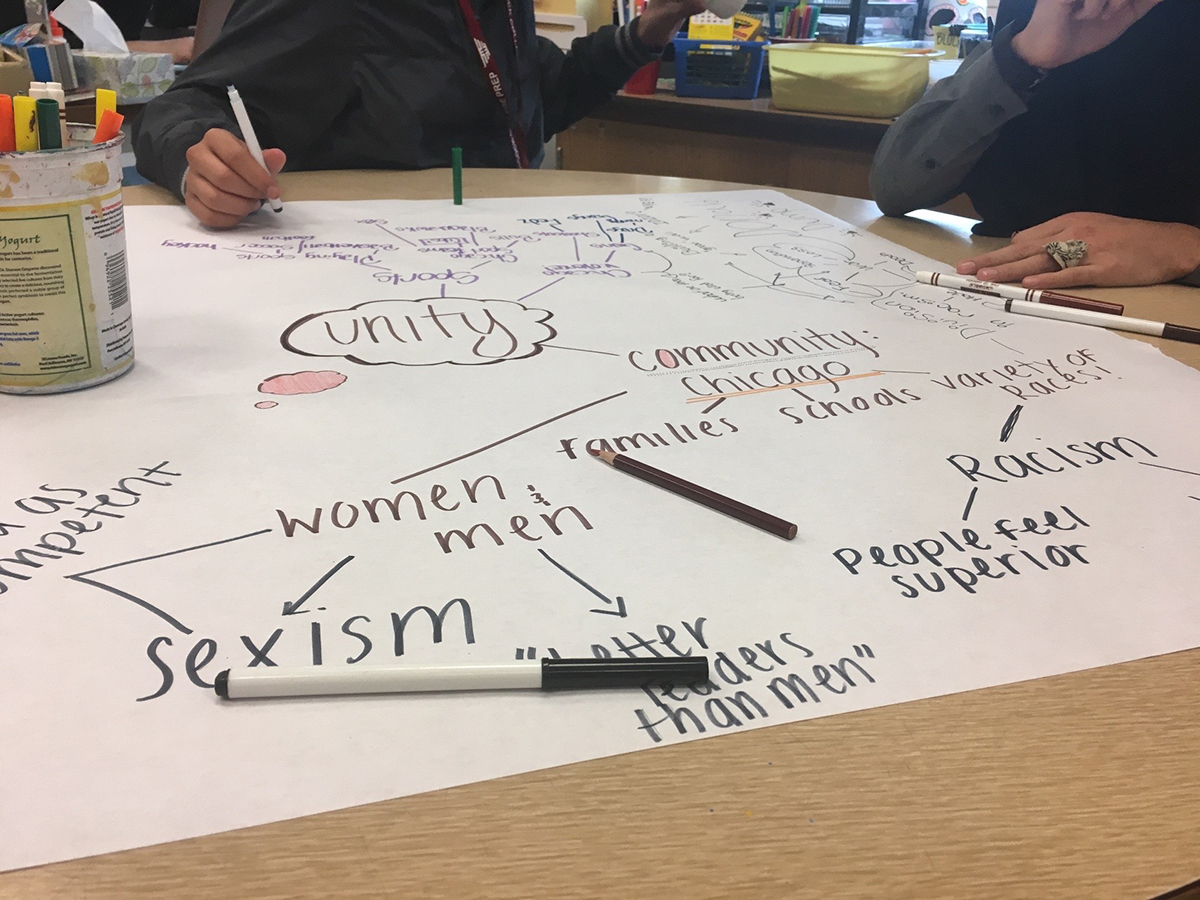We See Something Different
By Jessica Rosenbaum
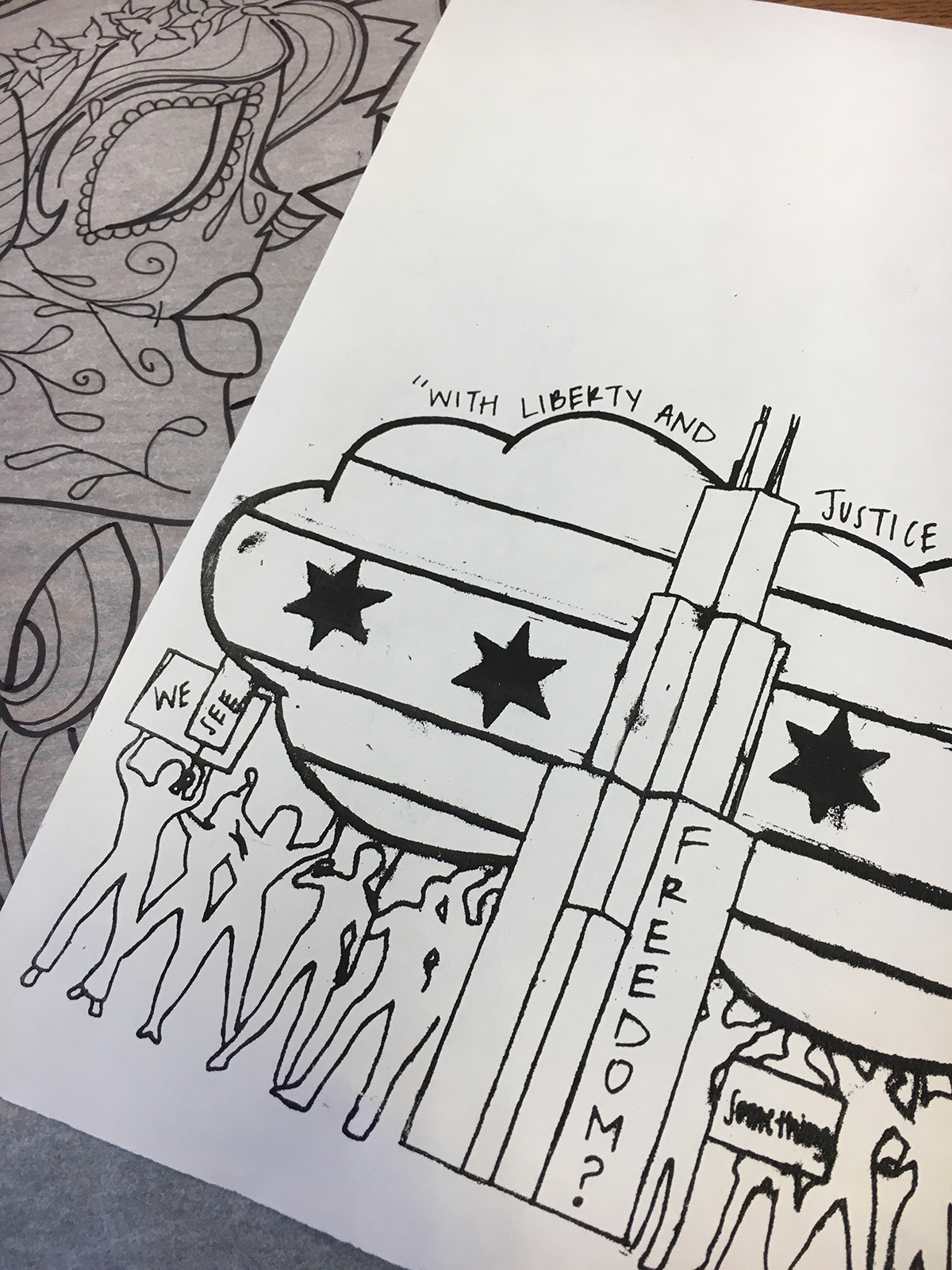
Mainstream narratives about the city of Chicago, including those constantly posited in public comments by the President of the United States, suggest that the city is a place of great deficits. This narrative paints Chicago as a place of persistent poverty, crime, violence, hopelessness, unfit schools and teachers, and cultural barrenness. Students in Art 1 at Hancock College Prep see something different. They see Chicago as a rich and vibrant place of beautiful and caring communities. In order to communicate this counter-narrative, students worked together to create a coloring book designed to empower younger students to feel proud, optimistic, and happy to be living in the wonderful city of Chicago through uplifting images.
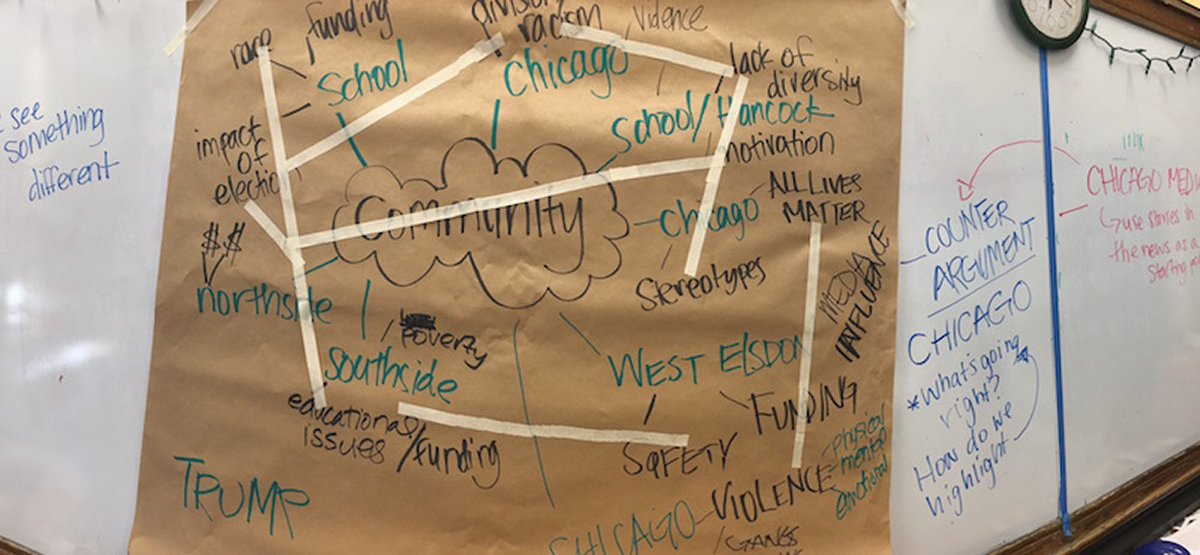
Goals and Objectives
- Students will be able to identity current events that directly affect their lives.
- Student will develop critical dialogue skills for building consensus around complex civic issues.
- Students will work together to use visual arts to communicate and educate on issues of consequence to them.
Guiding Questions
- What issues are important to our community?
- How and why do artists create social counter-narratives?
- What does an artist collective need to work together to create art that raises consciousness?
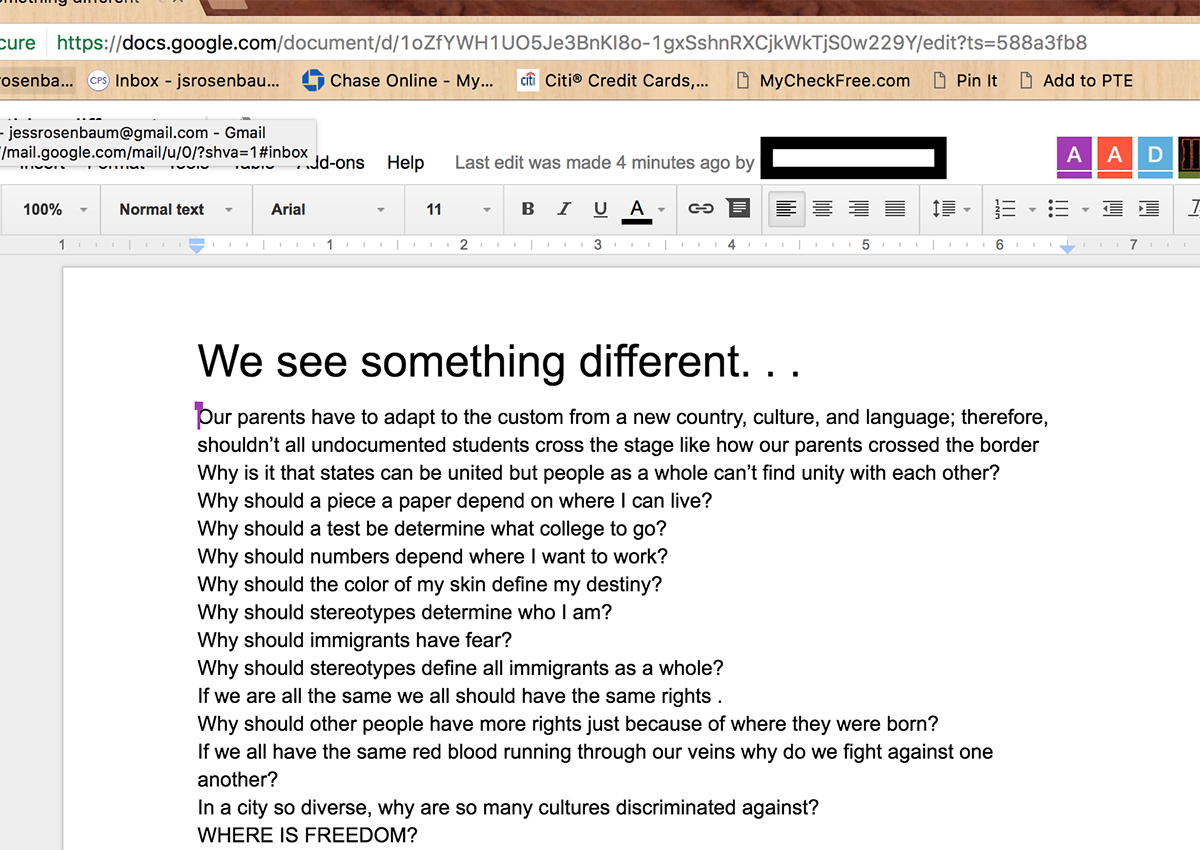
Documentation + Assessment
- Students documented their process photographically, beginning with our mind mapping process. This supported our work, as we were able to reference our thinking while we moved through the creation of the book.
- Students also documented their research through the use of Google Drive folders. This allowed students to create a digital portfolio of research and images and served as an important assessment tool as well.
- Conversation and critique served as formative assessment as we moved through the project. Students received regular feedback from peers, as well as written feedback from the teacher.
- As a summative task, students had to submit their completed image, as well as a short written statement summarizing both their individual research and the connection between their chosen subject and the concept of “We See Something Different”.
Learning Activities
Step 1
Current Events that Matter
Lead students in critical dialogue about current social issues affecting their lives.
Step 2
Counter-narratives in Art
Visit the Museum of Contemporary Art looking for examples of counter-narratives artists create. Introduce the work of Jenny Holtzer and other contemporary artists to examine the ways artists can speak directly on issues of power, and create counter-narratives to oppressive social schema.
Step 3
Define the Community
Building on reflections about current social issues that affect them as individuals, invite students to expand their lens to define the qualities of their local community and identify issues that affect many. Use mind mapping to make this complex task more visually clear.
Step 4
What do we do with the problem?
Allow students to struggle, tinker, sketch, and experiment together to define the art materials that can be used to address the social issue that matters to them, with an emphasis on developing communicative, participatory work that advances a helpful and liberatory counter-narrative.
Step 5
Create the work
Help students solve technical problems that arise as they pursue their plan, including designing demonstration and skill-building sessions to create and distribute the work.
Step 6
Reflect
What happened when we brought our counter-narrative to others? Did the community agree with our message? How do we continue the conversation in order to improve our community? What is the potential power of counter-narratives around other issues that matter?
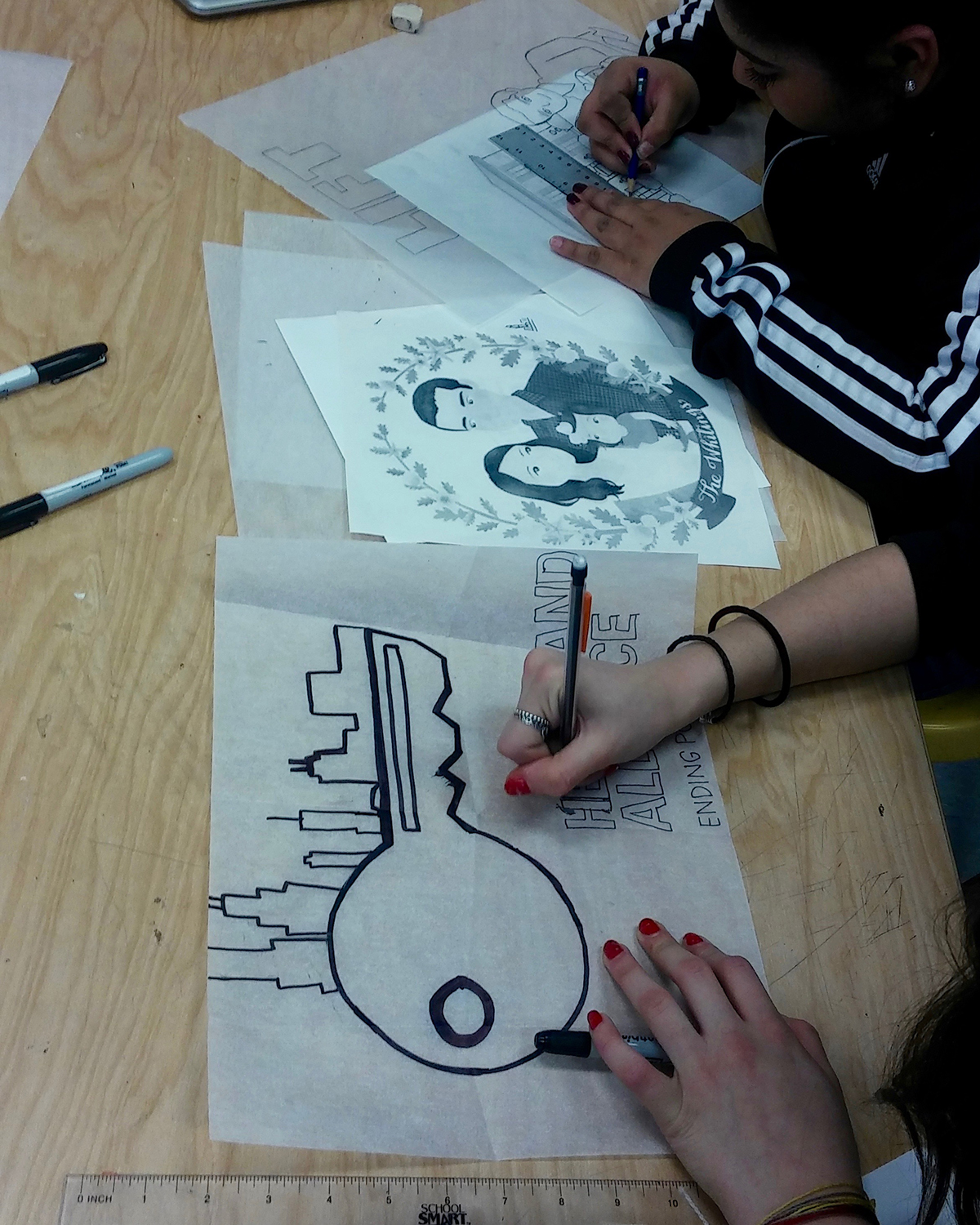
Materials
- Paper
- Pencils
- Sharpies
- Computers for internet research and writing
MCA Connections
Kerry James Marshall and the Propeller Group exhibitions were important influences on the development of my project. Kerry James Marshall’s complication of / challenge to established narratives in painting and the Propeller Group’s interest and work in mass media helped me to give shape to the concept developed by my students.

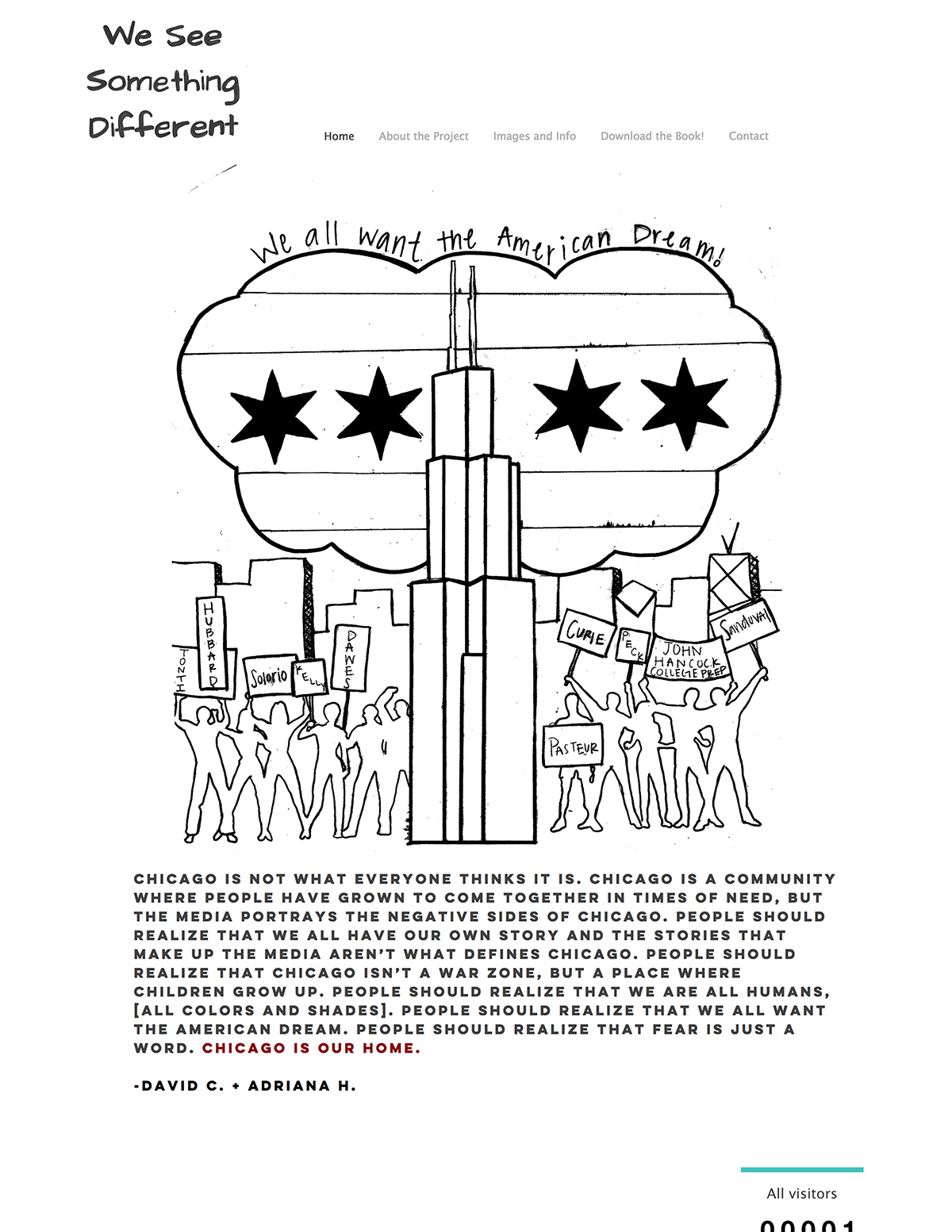
References + Resources
- We See Something Different website
- Jenny Holzer
- Change the Story Campaign
- Alex Kotlowitz in The New Yorker
- Kerry James Marshall’s Mastry [2016 MCA exhibit]
- Oli Watt’s Disasters of War (1997) as an example of an artist-made coloring book
Jessica Rosenbaum
John Hancock College Preparatory High School
Jessica Rosenbaum is entering her fifth year of teaching in the Chicago Public Schools and is currently teaching Art 1 and Sculpture at Hancock College Prep. Prior to Hancock, Jessica taught for four years at Seward Elementary in the Back of the Yards community. Jessica is a proud graduate of CPS. She earned a BFA in Painting from Northern Illinois University and a Masters of Arts in Teaching from the School of the Art Institute. In addition to teaching with CPS, Jessica has taught visual arts programs through the Chicago Park District and Columbia College Chicago. She has a varied studio practice, and is currently focused on screenprinting out of her home studio.
Jessica Reflects on her process
We struggled through a long process of false starts as students contended with challenging current events, such as an impending teacher’s union strike, a difficult presidential election season, the raising of racially oppressive legislation including a ban on travel based on religion, and threats of deportation of previously protected citizens. The content of the project was very student-generated, but as the teacher, I had to help students create the workspace. How do you represent a community organization and their work visually? What if you don’t know how to draw? How do you create an image that would engage a younger student? Service learning and civic engagement is a critical part of Hancock’s mission and vision, so we were able to draw from students’ own work with, or familiarity of, some of these various organizations as a starting point. Students also had a growing interest in the idea of sharing their art with a broader audience, and worked through many hurdles to reach consensus. As a group, we decided on a more specific, local audience for our work — specifically, the local elementary school students — and developed the idea of the coloring book as a simple, analog way of communicating information as well as co-creating artwork with a much larger audience.
